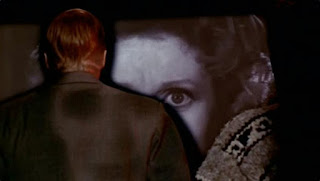So, we made a four day reservation for a tent camping site in Yosemite and headed north. These four days determined our entire excursion in California and the Pacific Northwest.
On our way away from the Pacific coast we decided to stop at Lava Beds National Monument which we could only reach by going through Oregon, We were only one of two campers in the campsite the two evenings we spent there. After awakening on the next morning we hiked one of the lava tubes that the national monument is famous for. In these tubes one hikes in total darkness.Despite this we only hit our heads twice, as I recall, as we felt our way along the walls of the lava tube from one cave to another. Thankfully we wore the hard hats which the rangers had provided to us in preparation for the hike.
After leaving Lava Beds we backtracked through Oregon and headed for Reno, Nevada. There we, much in need of a respite from tenting, stayed for four days in Circus Circus enjoying the hot tub, the television, and the cheap food that Reno, like Vegas, was then famous for. On one of our days in Reno we drove up to—and I mean drove up to--Lake Tahoe driving completely around the lake. It was, to say the least breathtaking. We had hoped to do some skiing but the temperature at the time we were there in April was in the 90s so skiing was inadvisable if not impossible.
Back in Reno we prepared to head to Yosemite. The we learned to our horror that the roads in from the Nevada side were closed during the winter months and April was considered a winter month. We panicked as we had to be in Yosemite the next day by, if memory serves, 6 pm or our campsite was first come first serve for others. Frantically we headed across the snowy Donner Pass to Sacramento then to Yosemite. We got there with a half hour to spare. We claimed our camp site noticing those waiting and hoping that those who made reservations, like us, would not show so they could claim an open tent site.
We, of course, did the usual things those who go to Yosemite do. We went to the lodge. We went to Hetch Hetchy whose beauty had been sadly destroyed to provide water for water hungry human animals in San Francisco. We took in the marvel that was El Capitan. We hiked along the river feeling its enveloping mist as we did. And we hiked up the 823 metres or 2700 feet of Yosemite Falls.
As we hiked the Falls out of Yosemite Valley we had never seen so many people on the trail during our various journeys across the Canadian and US Wests. It was as if we were, and paradoxically so, at the mall since, as one ranger told us while we were at Glacier National Park in Montana, people will walk for miles in a mall—one of the temples of capitalist consumerism—but not in the great outdoors. In Yosemite, at least, they were hiking for the moment outdoors. By the time we reached the table where the falls fell and then fell again, however, most of those hiking the Yosemite Falls Trail had disappeared hiking down the trail instead of hiking all the way up it. We were overjoyed to be away from the maddening halfway covenant crowd.
Truth be told, it was a difficult hike for Lea and me. This was in the days before I was treated for my asthma with Advair and Singulair and both of us, despite having hiked for months, had to stop a few times and catch our breath, resting for a half hour or so before beginning the hike up the mountain again. We were not the only ones having problems. We noticed a man in military fatigues who was in slow motion heavy breathing mode. There were other hikers, however, who made us feel deeply inadequate. Several young children, for example, seemed to have no problem hiking, nay running, up while a marathon runner in training passed us twice as we hiked up, once as he was on the way up the mountain and once as he was on the way down.
We finally reached the top and immediately went to where the falls fell off the mountain. We laid down on the pier at the top that stretched out to where the falls fell and watched the water fall. It was an amazing experience, an experience almost of free flight.
After we left Yosemite we went to nearby Kings Canyon National Park and Sequoia National Park. The weather remained absolutely gorgeous.There was hardly anyone at either campsite. At the Kings Canyon campground one of the RV campers made biscuits/cookies for everyone in the campground bringing them to each tent or RV. We were so happy and they tasted so good. We met an Australian couple who were taking their one year vacation to travel across the US and Canada. We saw a couple travelling in an RV having trouble negotiating the roads in and out of the campground. We saw an RV break down and have to be towed out by a wrecker. The things one sees when camping!



















